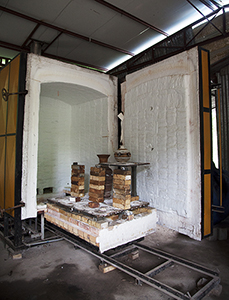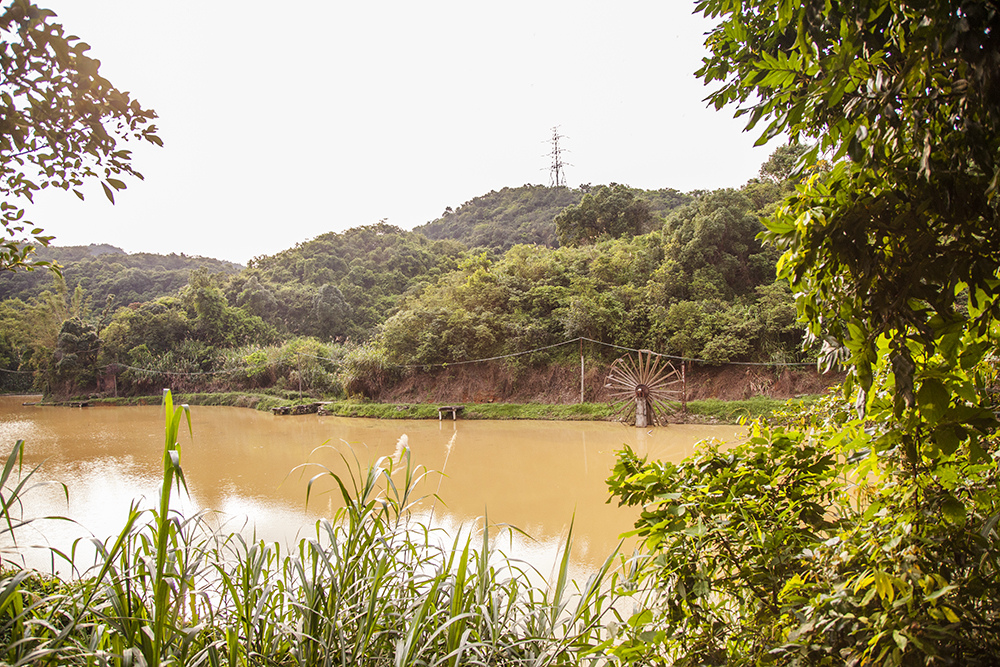Da Wang Culture Highland is a relatively young artist residency program situated in a most unique setting deep in the mountainous jungle, on the outskirts of Shenzhen. Hosting a small group of artists at a time, Da Wang Culture Highland also provides communal meals and a broad array of facilities for ceramic artists, painters and sculptors, and occasionally invites artists for fully funded residencies in exchange for a donation of a portion of the work created. We sat down with associate art director and ceramic artist Tom Hayes to get the ins and outs of this residency program:
China Residencies: How did Da Wang come to be?
Tom Hayes: Da Wang opened in 2008. Originally this site was a spring water bottling factory. After it closed down, [Da Wang's founder] Zhang Yu Fang had the idea of turning the factory into an art space. Even though his business now is in real estate, he studied painting and was an artist in 1970s. He wanted to do something that wasn't really happening in China, so he started these galleries in the country side, far from the city. The residency started to evolve from him inviting friends and artist he knew to come and stay, just asking them to leave a little something for his collection in return. At the beginning, it was very China-centric, then two years ago Ryan Mitchell set up the residency properly and was instrumental in expanding the program. I started helping them out at the end of last year, taking over managing the residency program, art direction and promotion.
CR: What kind of facilities are dedicated the resident artists?
TH: At the moment we have 7 rooms, 2 of which are singles rooms with a shared bathroom, the other 5 are twin rooms. The rooms are air conditioned, they're fairly basic but quite comfortable. Nothing flashy.

CR: What is the funding structure for this residency?
TH: Our residency program supports self-funded artists and occasionally invites artists on a fully paid residency.
The fully paid residency covers meals, accommodation, a studio, and a stipend to cover materials. We don't provide a visa, but we send a visa support letter, and in exchange, the invited artists donate 1/3 of the work they create here, but that's negotiable. Some people want to leave more, some even want to leave all of their work; on the other hand a performance artist might not leave anything but an event.
The self funded residency 4000 yuan a month, and we provide the same things except for the materials stipend. It's still very reasonable for a residency, and the self-funded residents just leave a small part of their work, maybe just one piece. A few people are a little worried about the idea of the art as donation, but it's very fair here, we come to an agreement on a case by case basis and there have never been any arguments.
CR: What is special about China for an artist today?
TH: I think Westerners should experience China, scratch a little bit at the surface of Chinese culture to see how different it is from our own. Why travel? What's the point in travel? At the end of the day, is it not to start asking questions and to start to compare your own society, your own way of thinking, what's right and wrong? That's the bigger answer.
CR: Why come to Da Wang specifically?
TH: This is a beautiful place up in the mountains, it's a lovely natural environment. You can also jump in the bus you'll be in sparkling Shenzhen 15 minutes later, watching all these metropolitan young Chinese living the dream, maybe. But essentially, you come back and you're living in a village.

The next village over, Wutongshan, is being turned into an art village. Wutong mountain is a recognized place of outstanding natural beauty, often painted in old Chinese ink drawings. Wutong mountain is at the heart of a reservoir that supplies water to Hong Kong, so urban development was halted here to keep water supply clean and maintain good relations. It's great for us to be here, because it's going to stay beautiful, there won't be skyscrapers everywhere.
CR: Tell us more about this art village:
TH: It's outside the city where the rent is cheap, so a few artists started to move there. It's grown and grown, with interesting people coming in, some smaller sort of coffee shops popping up. At some point the local government caught on and sort of nurtured this budding art village. I think they've learned from their mistakes, like OCT [Shenzhen's art district.] It's very commercial, with some really expensive restaurants and amazing wine bars. There's some great work there, sometimes... Wutongshan is happening a little more organically, they're paving the roads, building a museum and seeing what happens.
CR: What does being so close to Hong Kong add to this residency?
TH: Hong Kong is of course the other side of things, that was part of the reason for setting up here. The art scene there is booming, there are some great exhibitions and interesting galleries. It only takes 2 hours to get there, that's about as long as it takes to get to the other side of Shenzhen.

